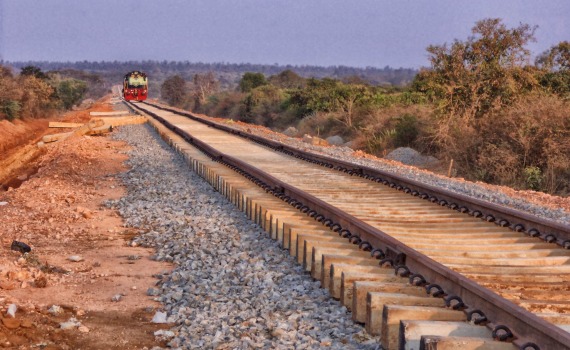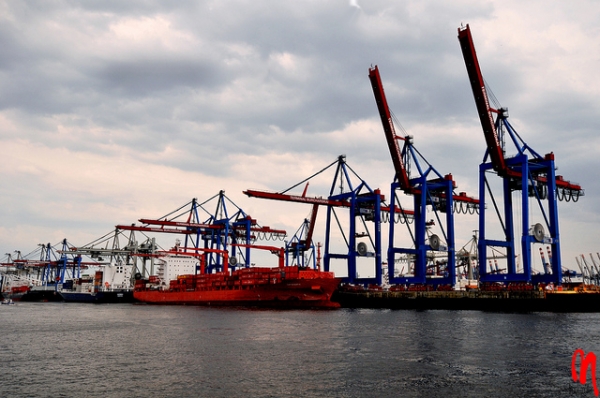 The term logistics originated in the early part of the 20th century during the World War years. It dealt with movement of troops and ammunition. Today, logistics has a broader meaning, dealing with micro-planning associated in the delivery of goods from the point of origin to the point of consumption, in the most efficient manner. The Indian logistics market recorded revenues of $104 billion in 2014 and is expected to grow by 6-7 per cent, year on year, to reach $160 billion by 2020, according to estimates made by Frost & Sullivan.
The term logistics originated in the early part of the 20th century during the World War years. It dealt with movement of troops and ammunition. Today, logistics has a broader meaning, dealing with micro-planning associated in the delivery of goods from the point of origin to the point of consumption, in the most efficient manner. The Indian logistics market recorded revenues of $104 billion in 2014 and is expected to grow by 6-7 per cent, year on year, to reach $160 billion by 2020, according to estimates made by Frost & Sullivan.
The anomaly of India’s logistics sector is that its huge size—in absolute terms and as a share in GDP—is largely a reflection of inherent inefficiency. In India, the logistics industry represents around 13 per cent of the country’s GDP as against 6-7 per cent in developed nations. Too many layers in the logistics chain, lack of IT-enabled solutions and infrastructure bottlenecks are just some of the tokens of inefficiency.
Railway is always the most efficient mode of transportation of bulk goods. However, railway in India is facing enormous capacity constraints coercing movement through road. Despite the national highway development programme, trucks can achieve an overall average speed of just 25 kmph, resulting in time and cost delays. The share of railway in transportation has shrunk from 60 per cent in the 1980s to around 50 per cent in the 1990s to around 30 per cent today.
The biggest hindrance to the Indian logistics market is irrational tax structure on movement of goods, exacerbated by complicated paperwork. Routes for movement of goods are optimized based on interstate disparities in taxation and duty rates like octroi, excise duty and sales tax, rather than on pure logistical efficiency. In this context, experts widely believe that the imminent introduction of uniform GST (goods & service tax) could simplify the tax structure greatly and bring in much needed efficiency in the logistics industry. It is estimated that the system of a common tax on goods and services is prevalent in over 150 countries in the world today.
Disparity in tax structures has an influence even on selection of sites for manufacturing operations. Ideally, manufacturing plants should be closer to sources of raw material and to transportation networks. However, some states like Uttarakhand, Himachal Pradesh, Jharkhand, etc offer significant fiscal benefits to manufacturers. A report by CII observes that currently, all manufactured goods are first transported to a company’s own warehouse in each geographic region and deliveries to clients are done from there with the specific region’s tax applicable for the transaction. In the GST regime, since the tax applicable would be same irrespective of where billing and deliveries are done, large orders are likely to be delivered directly from manufacturing plants to client locations. The report further observes that logistics service providers would need to realign their service networks to match those of the manufacturers, in the post-GST regime.
E-commerce is likely to be a growth driver for the logistics industry. At least in terms of being able to raise funds, several e-commerce platforms are found to be successful in India. Growing urbanization has led to online shopping as a matter of convenience. There is competition, amongst online retailers, not only in terms of pricing but also in delivery times. Much of the value proposition offered by online retailers hinges on efficient logistics, thereby boosting prospects of the logistics industry.
The perception of logistics in India is not that of a scientific industry. An overwhelming majority of players are of the traditional type, comprising small-fleet truck owners. In developed countries, logistics is an evolved scientific activity that attracts sufficient research and deployment of IT-related solutions. Experts feel that research, implementation of IT-based solutions and training institutes will give logistics a formal industry status, and sow the seeds of its growth.
Warehousing, which is an integral part of logistics, is an underdeveloped sector in India. The locations of warehouses are governed, as discussed earlier, by tax regimes more than geographical considerations. Facilities are generally poorly maintained and the overall management is inefficient.
Dedicated freight corridors, currently in the making, are expected to make the logistics industry efficient as rail-based movement will gain prominence. Movement of containerized cargo in time table-driven freight trains can drastically bring down transportation costs. Once dedicated freight corridors are set up, it will lead to the emergence of industrial corridors. With this, small warehouses that are scattered all over the country might get consolidated into large-sized regional hubs at strategic locations.
In summary, the growth of the logistics industry can be positively influenced by measures like introduction of GST, implementation of dedicated freight corridors, emergence of training institutes and the proliferation of e-commerce.











